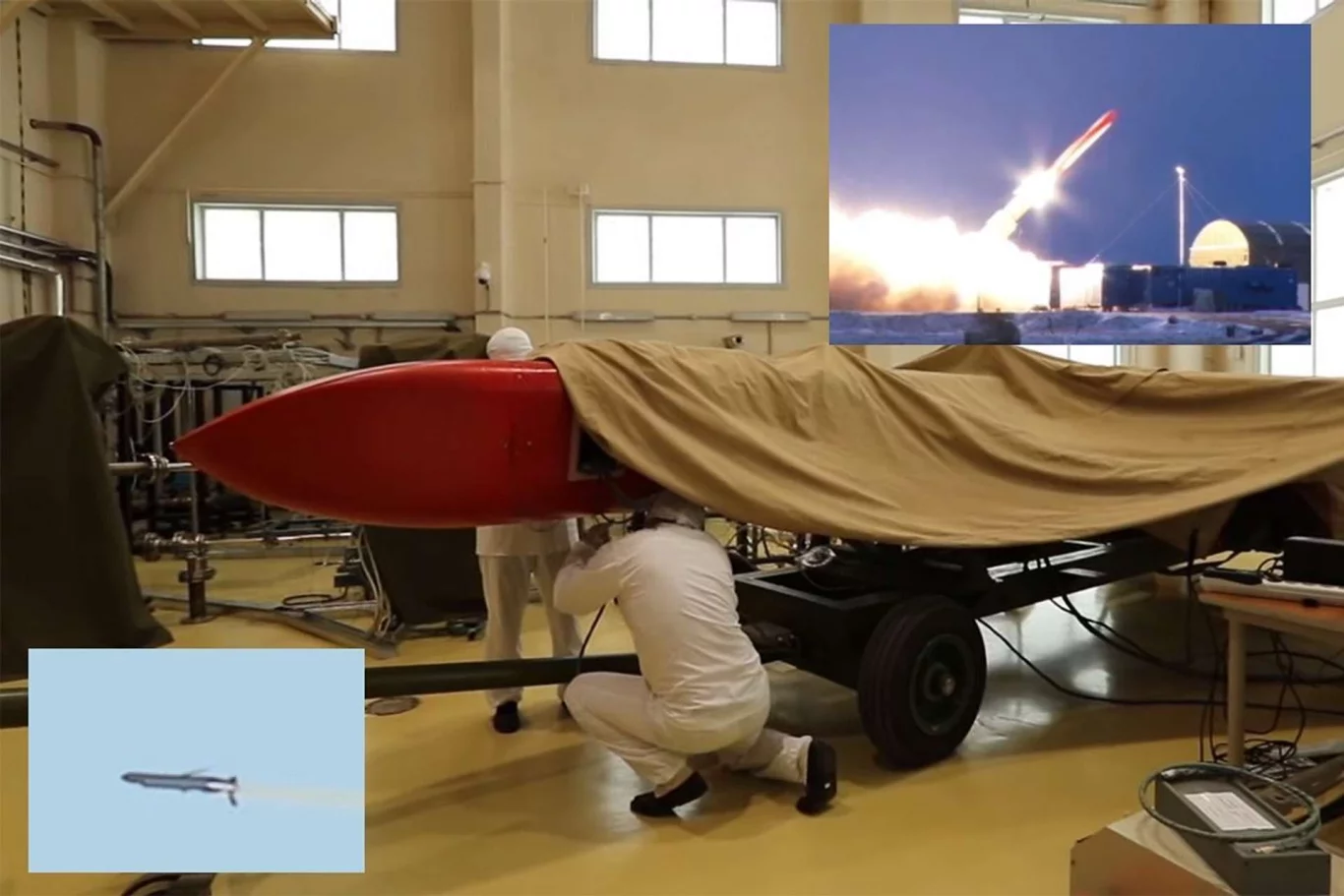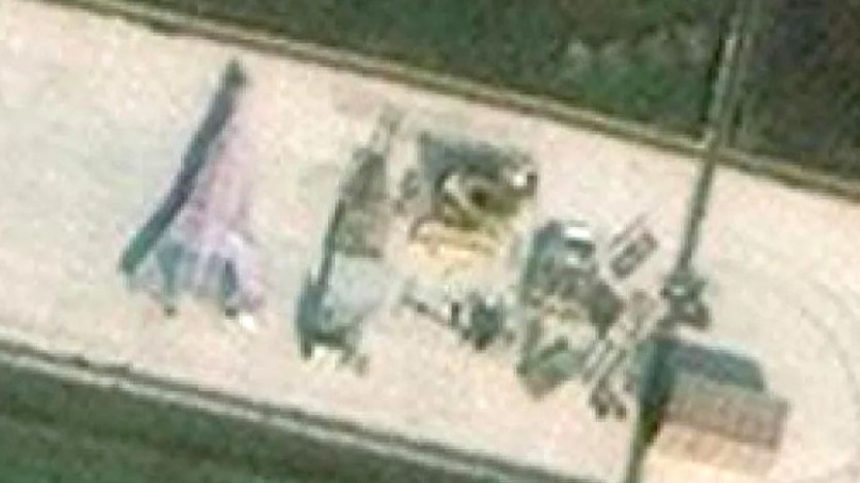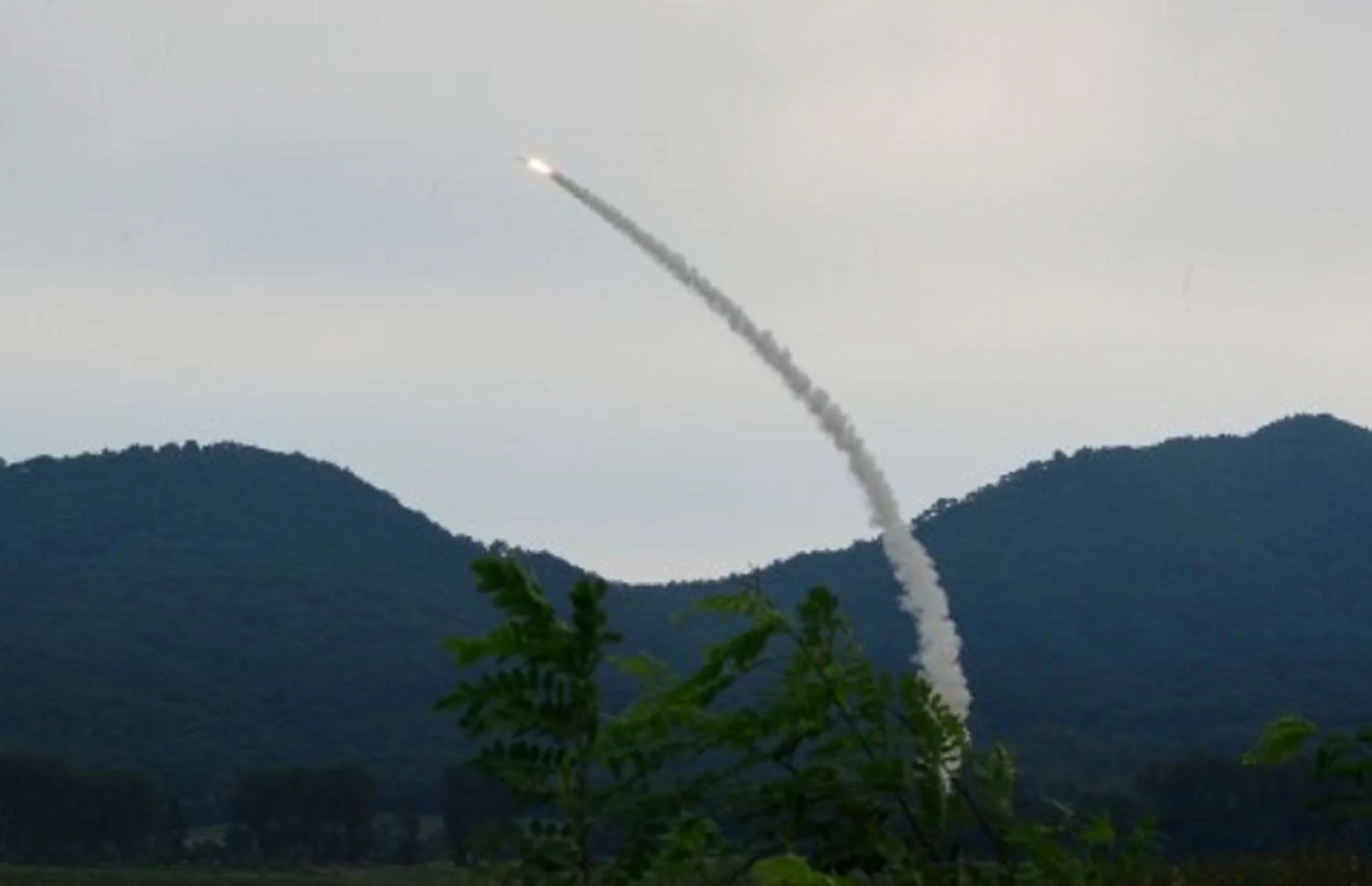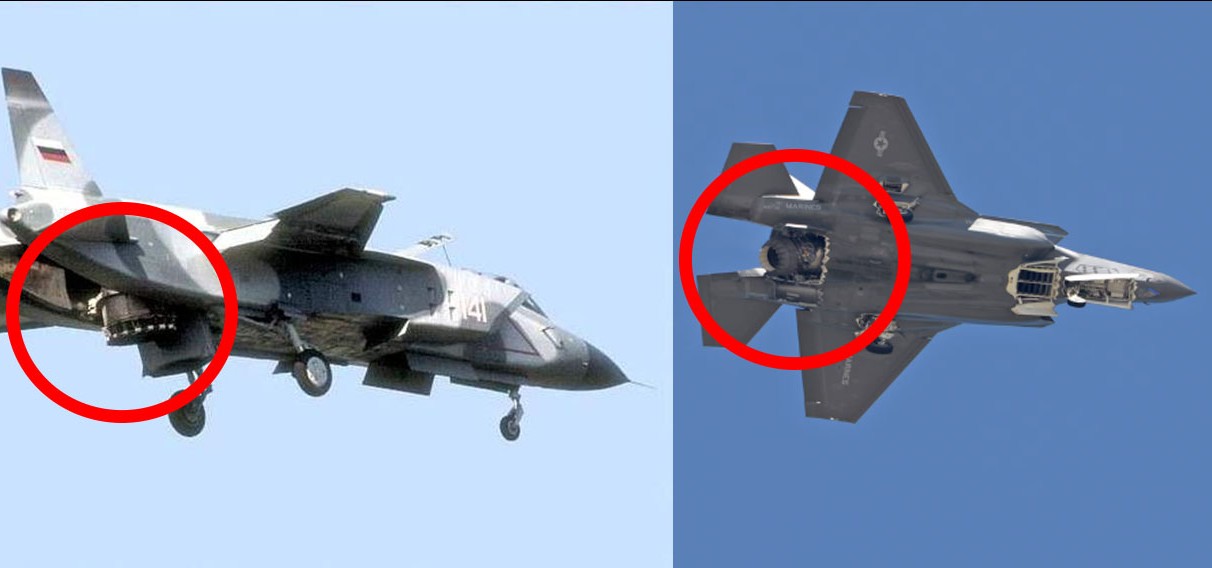In a chilling broadcast that has sent shockwaves rippling through the halls of NATO headquarters and the bunkers of global intelligence agencies, Russian President Vladimir Putin dropped a bombshell on Sunday, October 26, 2025: his nation has just executed a marathon flight test of the infamous 9M730 Burevestnik—better known to the West as the SSC-X-9 “Skyfall”—a nuclear-powered, nuclear-armed intercontinental cruise missile straight out of a dystopian thriller. Delivered via a riveting televised briefing from the Kremlin, with echoes from his top military brass, Putin didn’t mince words. Citing a commander’s detailed report, the weapon soared for a mind-boggling 15 hours, covering 14,000 kilometers on October 21, weaving through the skies in a low-altitude serpentine path designed to mock every air defense system on the planet. This isn’t just a test; it’s Moscow’s brazen flex, screaming to the world that Russia’s arsenal now includes a “ghost missile” with virtually unlimited range, endurance measured in months, and the eerie ability to hug the Earth’s surface like a predator stalking its prey. As Reuters flashed the news across global wires, the message was crystal clear: the Burevestnik isn’t a pipe dream anymore—it’s primed for deployment, ready to pierce “any missile defenses” and rewrite the rules of nuclear deterrence.
The timing couldn’t be more ominous. With New START’s expiration looming just months away in February 2026, and the ghosts of the collapsed INF Treaty still haunting arms-control talks, Putin’s announcement feels like a deliberate gut-punch to fragile global stability. It’s a signal that Russia is done playing by yesterday’s rules, accelerating its pivot toward exotic, unpredictable weapons that evade traditional ballistic missile shields. For the Euro-Atlantic alliance, this test isn’t abstract—it’s a direct threat to early-warning radars, fighter patrols, and the intricate web of sensors guarding against aerial incursions. Imagine a missile that doesn’t scream across the sky on a predictable arc but loiters for weeks, dipping to mere tens of meters above oceans or mountain ridges, only to strike from the most unexpected angle. That’s the Burevestnik’s promise, and if even half of it materializes, it could force a frantic scramble in Washington, London, and Brussels to rethink everything from satellite constellations to interceptor deployments.
Unpacking the Beast: What Makes Burevestnik a Game-Changer?
At its core, the Burevestnik is a ground-launched, subsonic cruise missile that swaps out conventional jet fuel for a nuclear reactor—yes, a compact atomic heart pumping endless power into a turbojet engine. Unveiled in 2018 as part of Putin’s “six miracle weapons” parade, it’s been shrouded in secrecy, punctuated by whispers of catastrophic failures. Remember the 2019 test explosion that claimed Russian engineers’ lives and spiked radiation in the Arctic? That was the dark underbelly of this program, a stark reminder that harnessing nuclear fission for flight is as risky as it is revolutionary. But fast-forward to today: the Kremlin claims the kinks are ironed out, with this latest flight proving the missile’s ability to maintain “highly variable routing” at ultra-low altitudes, evading radar like a submarine slips past sonar.
Technically speaking, the Burevestnik’s specs paint a portrait of engineered terror. Powered by a nuclear air-breathing engine, it theoretically boasts global range—no refueling stops, no endurance limits beyond the crew’s sanity (or in this case, the missile’s autonomous brain). The disclosed flight path? A serpentine odyssey of 14,000 km in 15 hours, averaging speeds that suggest a leisurely subsonic cruise, perfect for terrain-following navigation that skims the waves or valleys at altitudes as low as 30-50 meters. That’s below the horizon for most ground radars, turning detection into a nightmare for overworked AWACS planes and coastal surveillance networks. Add in advanced guidance—likely a cocktail of inertial systems, GPS alternatives, and terrain-matching algorithms—and you’ve got a weapon that can detour around hot zones, loiter offshore for days (or months, per Russian hype), and then dart in for a precision nuclear kiss.
But it’s not just about flying forever; it’s about striking smarter. The Burevestnik can carry either a conventional warhead for surgical hits or a nuclear one for city-erasers, making it a dual-threat wildcard. In a world obsessed with hypersonics and ICBMs, this low-and-slow approach flips the script: why burn bright and fast when you can ghost in silently, overwhelming defenses through sheer persistence? Analysts at think tanks like the RAND Corporation and the International Institute for Strategic Studies have long warned that such systems could “complicate early warning and air-policing doctrines,” forcing NATO to burn fuel on endless patrols and upgrades. And with Russia’s state media blasting footage of the launch (carefully edited, of course), the psychological warfare angle is in full swing—Putin’s steely gaze on camera underscoring that this isn’t bluster; it’s a promise of “no analogues” in the West’s arsenal.
A Blast from the Cold War: Burevestnik’s Twisted Family Tree
To truly grasp the Burevestnik’s menace, you have to rewind to the fever dreams of the Cold War. This missile is the unholy spawn of America’s aborted Project Pluto from the 1950s—a nuclear ramjet concept that could have circled the globe indefinitely, spewing fallout in its wake before a planned self-destruct. The U.S. scrapped it over ethical qualms and safety horrors (imagine a reactor crashing into Nebraska), but Russia? They’ve dusted off the blueprint, turbocharged it with 21st-century stealth tech, and aimed it straight at the heart of NATO. Echoes of the Soviet-era SLAM (Supersonic Low-Altitude Missile) linger too, but Burevestnik evolves the idea: subsonic stealth over supersonic speed, endurance over evasion.
Historically, the program’s rocky road has been a mix of bravado and blunders. Publicly teased in 2018 amid Putin’s re-election spectacle, early tests fizzled—literally, in some cases—with U.S. intelligence tracking at least a dozen failures by 2020. The 2019 Nyonoksa disaster, where a liquid-fueled prototype detonated, killing five and contaminating the White Sea, was the low point: radiation plumes detected by Norwegian sensors, forcing Moscow into awkward denials. Yet, persistent investment—bolstered by Russia’s military-industrial complex—has yielded this endurance milestone. Now, tied into broader strategic drills, the Burevestnik slots into a diversified strike portfolio: SLBMs from the seabed, ICBMs from silos, and now this lurking leviathan from mobile launchers hidden in Siberia’s vastness.
Operationally, deployment poses juicy riddles. Where do you base a nuclear-powered missile? Subterranean silos for stealth? Mobile TELs (transporter-erector-launchers) for survivability? And handling that reactor—shielded against crashes, EMPs, and nosy satellites—adds layers of logistical hell. Russia’s top brass, parroting Putin’s line, insists it’s “ready for combat duty,” but skeptics in the West point to unresolved questions: How do you cool a fission engine mid-flight without telltale infrared signatures? What’s the guidance accuracy after weeks aloft? And in a hot war, does it become a radiological dirty bomb if shot down?
Head-to-Head: How Burevestnik Stacks Up Against NATO’s Best (And Why It Scares Them Silly)
To cut through the hype, let’s stack the Burevestnik against NATO’s cruise missile heavy-hitters. This isn’t apples-to-apples—Russia’s bird is an endurance freak, not a speed demon—but the contrasts are telling:
| Missile | Powerplant | Range | Speed | Altitude Profile | Payload | Key Edge | Key Weakness |
|---|---|---|---|---|---|---|---|
| Burevestnik (Russia) | Nuclear turbojet | “Unlimited” (months-long loiter) | Subsonic (~Mach 0.8) | Ultra-low (10-50m terrain-following) | Nuclear/Conventional | Endless endurance, unpredictable routing | Safety risks, unproven reliability, radiological fallout potential |
| Tomahawk Block V (USA) | Turbofan (conventional) | ~1,700 km | Subsonic | Low-to-medium (sea-skimming) | Conventional | Proven in 2,000+ strikes (Iraq, Syria) | Limited range, predictable paths |
| JASSM-ER (USA) | Turbofan (conventional) | >1,000 km | Subsonic | Low-altitude stealthy | Conventional | Stealthy airframe, network-centric fire | Air-launched only, no nuclear option in service |
| Storm Shadow/SCALP-EG (UK/France) | Turbofan (conventional) | >560 km | Subsonic | Terrain-following low | Conventional | Combat-veteran (Libya, Ukraine) | Short legs, vulnerable to advanced SAMs |
| ASMP-A (France) | Ramjet (conventional) | ~500-600 km | Supersonic (Mach 3) | Medium-to-high | Nuclear | Quick-reaction “pre-strategic” strike | Air-launched, shorter range than peers |
Burevestnik towers over the pack in persistence—Tomahawks guzzle fuel after 1,000 miles; Skyfall just keeps circling like a vulture. But at what cost? NATO’s birds have thousands of combat hours; Russia’s has a rap sheet of explosions. Still, if fielded in even small numbers (say, 20-50 missiles), it could force adversaries to spread thin: more CAP sorties, denser radar nets, and billions poured into counter-cruise upgrades like the U.S. NGAD or Europe’s TWISTER program.
The Domino Effect: Operational Nightmares and Geopolitical Tsunamis
Zoom out, and the implications hit like a shockwave. Operationally, this test amps the pressure on air defense planners. Traditional ballistic shields (Aegis, THAAD) shrug at low-fliers; Burevestnik demands a rethink—beefed-up over-the-horizon radars, drone-hunter swarms, and AI-fused sensor grids to spot that telltale reactor glow. Fighter jocks will burn more hours on “cruise patrols,” while passive acoustics (listening for engine whines over waves) become must-haves. In the Black Sea or Baltic, where Russia’s Kalibrs already sting, a loitering Skyfall could tie up assets for days.
Geopolitically, it’s a powder keg. With arms control in tatters—INF dead since 2019, New START wheezing—this outlier weapon slips through cracks, unbound by range caps or launch notifications. Putin’s “no analogues” boast? It’s code for “escalation dominance,” daring the West to match a nuclear cruise freak without sparking a new arms race. Expect NATO’s upcoming summits to buzz with calls for “novel propulsion treaties” or CBMs (confidence-building measures) like pre-launch telemetry shares. Meanwhile, U.S. hawks might push for more Virginia-class subs with hypersonic boosts, while Europe fast-tracks FCAS (Future Combat Air System) integrations. And don’t forget the psyops: Russian TV looping test clips to unnerve Kyiv, Tallinn, and Warsaw, whispering, “Your SAMs? Obsolete.”
Critics will cry foul—Putin’s claims smack of propaganda, with the 15-hour flight proving stamina but not endgame punch against layered defenses like Israel’s Iron Dome on steroids. Western intel will dissect: Can it navigate post-jam? Handle mid-flight tweaks? Survive a shoot-down without Chernobyl 2.0? Yet, even as a “niche deterrent,” it forces resource drains—NATO’s $1 trillion defense hike just got a new justification.
The Reckoning: From Test Pad to Doomsday Arsenal?
Putin’s Kremlin spectacle—live remarks, brass salutes, Reuters amplification—is no accident. It’s the pivot from lab curiosity to lineup staple, woven into Russia’s “strategic forces” tapestry for assured second strikes or coercive bluffs. Whether Burevestnik fleets the skies in squadrons or stays a singleton showpiece, it spotlights a brutal truth: cruise threats are mutating—nuclear hearts, eternal wings, shadow paths—outpacing creaky treaties and legacy shields.
As October 2025’s chill deepens, one thing’s certain: the world just got a glimpse of Moscow’s next nightmare. Will NATO adapt fast enough, or will Skyfall’s shadow lengthen unchecked? The clock’s ticking, and the skies have never felt smaller.




